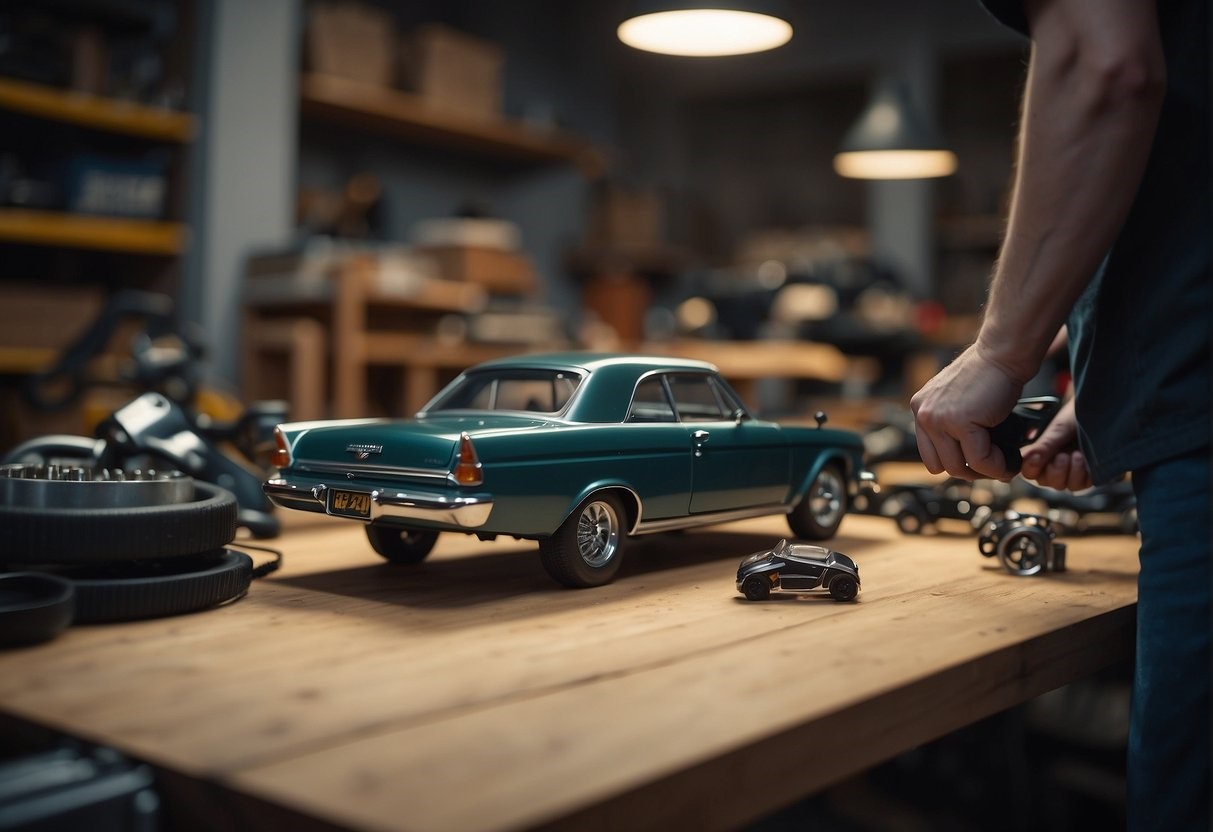If you’re a car owner, you know how expensive it can be to take your vehicle to a mechanic for repairs and maintenance.
Fortunately, there is another option: DIY car repair and maintenance. By doing the work yourself, you can save money and learn more about your car.
However, if you’re going to tackle car repairs and maintenance on your own, you need the right tools and resources.
One of the most important resources is a workshop manual.
Workshop manuals are comprehensive guides that provide detailed information about how to repair and maintain a specific make and model of car.
They include step-by-step instructions, diagrams, and photographs to help you understand how to complete a range of tasks, from changing the oil to replacing the transmission.
Workshop manuals are written by experts who have years of experience working on cars, so you can trust the information they provide.
There are several reasons why workshop manuals are the best option for DIY car repair and maintenance.
First, they are much more detailed than the owner’s manual that comes with your car.
While the owner’s manual provides basic information about how to use your car, a workshop manual goes into much greater detail about how to repair and maintain it.
Second, workshop manuals are tailored to your specific make and model of car, which means you can be sure that the information is accurate and relevant.
Finally, workshop manuals are much cheaper than taking your car to a mechanic for repairs and maintenance, which means you can save a lot of money over the life of your vehicle.
Comprehensive Guidance

When it comes to DIY car repair and maintenance, having comprehensive guidance is key. Workshop manuals provide just that, offering step-by-step instructions and visual aids to help you successfully complete repairs and maintenance tasks on your own.
Step-by-Step Instructions
Workshop manuals provide detailed step-by-step instructions for repairing and maintaining your vehicle.
These instructions are written in a clear and concise manner, making it easy for you to follow along and complete the task at hand.
Whether you’re a seasoned DIYer or a beginner, the instructions provided in workshop manuals are easy to understand and follow.
Visual Aids
In addition to step-by-step instructions, workshop manuals also provide visual aids to help you complete repairs and maintenance tasks.
These visual aids may include diagrams, illustrations, and photographs, all of which can be incredibly helpful when trying to understand a particular repair or maintenance task.
By providing both written and visual instructions, workshop manuals make it easy for you to successfully complete repairs and maintenance tasks on your own.
Cost-Effectiveness

When it comes to DIY car repair and maintenance, workshop manuals are the most cost-effective option. Here are some reasons why:
Savings on Labor
Taking your car to a mechanic can be expensive, especially when it comes to labor costs.
With a workshop manual, you can perform repairs and maintenance yourself, saving you money on labor costs.
Not only will you save money on labor costs, but you’ll also have the satisfaction of knowing that you did the work yourself.
This can be a fulfilling experience for those who enjoy working on cars and can also be a great way to learn more about your vehicle.
Avoiding Unnecessary Repairs
Another cost-saving benefit of using a workshop manual is that it can help you avoid unnecessary repairs.
By following the manual’s instructions, you can diagnose and fix the problem without having to replace parts that are still in good condition.
For example, if your car is making a strange noise, you can consult the manual to see if it’s a common issue and how to fix it.
Without the manual, you might assume that the problem is more serious than it actually is and end up replacing parts that don’t need to be replaced.
Customization and Control

When it comes to DIY car repair and maintenance, having complete control over the project is essential. Workshop manuals provide you with the necessary information and guidance to customize your repairs and maintenance tasks according to your needs and preferences.
Personalization of Repairs
Workshop manuals offer step-by-step instructions that allow you to personalize your repairs and maintenance tasks.
With detailed information on the inner workings of your car, you can tailor your repairs to suit your specific needs and preferences.
You can also choose the parts and tools you want to use, ensuring that your car is repaired and maintained to your standards.
Pacing the Project
Another benefit of using workshop manuals for DIY car repair and maintenance is the ability to pace the project according to your schedule and level of expertise.
You can take your time to complete each step, ensuring that you fully understand the process before moving on to the next.
This allows you to work at your own pace, without feeling rushed or overwhelmed.
Learning and Skill Development

Learning how to repair and maintain your car can be a daunting task, but with the help of workshop manuals, you can easily gain the knowledge and skills needed to perform DIY car repair and maintenance. Here are two ways in which workshop manuals can aid in your learning and skill development:
Understanding Vehicle Mechanics
One of the most significant benefits of using workshop manuals is the ability to understand the mechanics of your vehicle.
Workshop manuals provide detailed information about how each component of your car works and how it should be maintained.
By understanding the mechanics of your vehicle, you can diagnose problems more accurately and perform repairs more efficiently.
Workshop manuals also provide helpful diagrams and illustrations that make it easier to visualize and understand the workings of your car.
Building Confidence
Another benefit of using workshop manuals is the confidence it can give you in performing DIY car repair and maintenance.
When you have a clear understanding of how your car works and how to repair it, you can approach repairs with confidence.
Workshop manuals provide step-by-step instructions that are easy to follow, helping you to perform repairs and maintenance tasks without the need for professional assistance.
As you gain more experience in performing DIY car repair and maintenance, your confidence will grow, and you will be able to tackle more complex tasks.
Troubleshooting Support
When it comes to DIY car repair and maintenance, having access to reliable troubleshooting support is essential. Workshop manuals are the best option for this, as they provide detailed diagnostic information and problem-solving strategies that can help you identify and fix issues with your vehicle.
Diagnostic Information
Workshop manuals include comprehensive diagnostic information that can help you pinpoint the root cause of any issues you may be experiencing with your car.
This information typically includes detailed descriptions of common symptoms, as well as step-by-step instructions for performing diagnostic tests and interpreting the results.
Whether you’re dealing with a check engine light, strange noises, or other issues, a workshop manual can help you diagnose the problem quickly and accurately.
This can save you time and money in the long run, as you won’t have to spend hours trying to figure out what’s wrong with your car.
Problem-Solving Strategies
In addition to diagnostic information, workshop manuals also provide problem-solving strategies that can help you fix any issues you may be experiencing with your vehicle.
These strategies may include detailed repair procedures, recommended parts and tools, and tips for troubleshooting common problems.
By following these strategies, you can ensure that you’re addressing the root cause of any issues with your car, rather than just treating the symptoms.
This can help you avoid costly repairs down the line, and keep your vehicle running smoothly for years to come.
Maintenance Schedules
When it comes to maintaining your vehicle, following a maintenance schedule is crucial to keeping it running smoothly and avoiding any major repairs. Workshop manuals provide detailed maintenance schedules that are specific to your vehicle’s make and model, making them an invaluable resource for DIY car repair and maintenance.
Routine Check-Ups
Routine check-ups should be performed regularly to ensure that your vehicle is in good condition.
These check-ups include things like oil changes, tire rotations, and fluid level checks.
Workshop manuals provide detailed instructions on how often these check-ups should be performed and what needs to be done during each check-up.
For example, the manual may recommend that you change your oil every 5,000 miles and rotate your tires every 10,000 miles.
By following these recommendations, you can help prevent any major issues from occurring and keep your vehicle running smoothly.
Long-Term Care Plans
In addition to routine check-ups, workshop manuals also provide long-term care plans that are specific to your vehicle’s make and model.
These plans include things like replacing timing belts, spark plugs, and other parts that wear out over time.
By following these long-term care plans, you can help extend the life of your vehicle and avoid any major repairs down the road.
Workshop manuals provide detailed instructions on how to perform these tasks, making it easy for DIY enthusiasts to take care of their vehicles at home.
Tool and Equipment Recommendations
When it comes to DIY car repair and maintenance, having the right tools and equipment is essential. Here are some recommendations to help you get started:
Basic Tools
Every DIY mechanic should have a basic set of tools, including:
- Socket set
- Wrench set
- Screwdriver set
- Pliers
- Hammer
- Jack and jack stands
Specialty Tools
Depending on the type of car you have, you may need some specialty tools to complete certain repairs or maintenance tasks. Here are some examples:
- OBD-II scanner: This tool allows you to read and clear diagnostic trouble codes (DTCs) from your car’s computer.
- Torque wrench: This tool is used to tighten bolts to a specific torque specification.
- Brake bleeder kit: This tool is used to bleed air from your car’s brake system.
- Oil filter wrench: This tool makes it easier to remove and install oil filters.
Safety Equipment
Working on cars can be dangerous, so it’s important to have the right safety equipment. Here are some recommendations:
- Safety glasses: Protect your eyes from flying debris.
- Gloves: Protect your hands from sharp edges and hot surfaces.
- Respirator: Protect your lungs from harmful fumes and dust.
- Fire extinguisher: Be prepared for any unexpected fires.
Safety Precautions
When it comes to DIY car repair and maintenance, safety should always be your top priority. Before you start working on your vehicle, it’s essential to take some precautions to protect yourself and anyone else who may be nearby.
Here are some safety tips to keep in mind:
-
- Wear protective gear: Always wear appropriate protective gear, such as gloves, goggles, and a face mask when working on your car. This will help protect you from any harmful chemicals, flying debris, or other hazards.
- Use proper tools: Make sure you have the right tools for the job and that they are in good condition. Using the wrong tool or a damaged one can lead to accidents and injuries.
- Follow instructions: Before you start working on your car, read the workshop manual carefully and follow the instructions. This will help you avoid any mistakes that could lead to accidents or damage to your vehicle.
- Work in a well-ventilated area: If you’re working with chemicals or other hazardous substances, make sure you’re in a well-ventilated area. This will help prevent you from inhaling any harmful fumes.
- Don’t work alone: It’s always a good idea to have someone else nearby when you’re working on your car. They can help you if you need it and can call for help if there’s an emergency.
Community and Support Resources
One of the greatest benefits of using workshop manuals for DIY car repair and maintenance is the availability of community and support resources.
Many workshop manuals come with online forums, chat rooms, and social media groups where you can connect with other DIY enthusiasts and experts in the field.
These communities provide a wealth of information and support, making it easier for you to troubleshoot problems and find solutions.
In addition to online communities, many workshop manuals also come with customer support resources.
These resources can include email and phone support, as well as access to technical experts who can help you with any questions or issues you may encounter.
Having access to these resources can give you the confidence you need to tackle even the most challenging repairs and maintenance tasks.
Another benefit of using workshop manuals is the ability to access step-by-step guides and tutorials.
Many manuals come with detailed instructions and illustrations that can help you understand complex concepts and procedures.
This can be especially helpful if you are new to DIY car repair and maintenance, as it can help you build your skills and knowledge over time.

